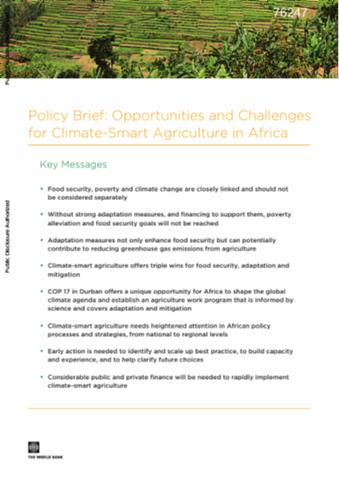Reducing the environmental efficiency gap in global livestock production
Designing an Index to Reveal the Potential of Multipurpose Landscapes in Southern Africa
Multipurpose mosaic (“ecoagriculture”) landscapes can serve the purpose of land sharing to combine objectives of agricultural production and biodiversity conservation. Rewarding the people who shape and maintain those landscapes could act as a mechanism to generate added-value representing an indirect payment for ecosystem services. We investigated the feasibility of such an approach in two areas in Southern Africa differing in spatial configurations, history and socio-economic context.
Agricultural cadastre information system in the Republic of Moldova.
Unstable weather conditions specific for the Republic of Moldova destabilize the agricultural products market. These and other features of modern agriculture make our society to face acute need for informatization, especially it concerns the agricultural producers (farmers) but also public authorities of all levels. The implementation of Agricultural Cadastre Information System, initiated successfully in our country, is a fundamental solution in this regard.
Eco-economic aspects of sustainable agricultural land use
Sustainability of agricultural land use is determined by economic and environmental characteristics of land resources. The method for land use assessing, which enables to determine the type of its environmental and economic status (EES), was developed. The method includes the calculation of performance indicators, drafting the scale and the determination of the cumulative EES for land.
Contribution to knowledge of spatial distribution of succession trees in relationship with distance of forest border
Land use reflects the needs, demands and values of human society. We can see two antagonistic trends of land use change in Slovakia over the past few decades. Land use change towards more intensive in some areas (vicinity of cities, highways, lowlands), but others (uplands and mountains with traditionally agricultural used) are abandoned and left to their own spontaneous dynamic. The abandonment of agriculture is a pattern common to all industrialized countries, especially in hilly and mountain ranges (Farina, A., 2007).
Land abandonment may reduce disturbance and affect the breeding sites of an Endangered amphibian in northern Italy
Although human-related disturbance is usually detrimental for biodiversity, in some instances it can simulate natural processes and benefit certain species. Changes in the disturbance regime, both natural and human-driven, can affect species that rely on it. The Apennine yellow-bellied toad Bombina variegata pachypus, an amphibian endemic to peninsular Italy, has declined throughout its range in the last 3 decades. We sought to identify the drivers of the decline in the region of Liguria, at the north-western limit of its distribution.
Policy Brief
Agriculture is the economic foundation of many Sub-Saharan Africa (SSA) countries, employing about 60 percent of the workforce and contributing an average of 30 percent of gross domestic product. Yet agricultural growth rates for SSA declined in the 2000 and food insecurity remains a concern, with malnourishment only dropping from 34 to 30 percent in two decades. Various projections suggest that food production must increase by 70-100 percent by 2050 to meet the demands of a world with 9 billion people and changing diets.
Adaptive, participatory and integrated assessment and agro-ecosystem analysis to support decisionmaking for water allocation for fisheries and agriculture in the Tonle Sap wetland system
Commune agro-ecosystems analysis (CAEA) is a participatory approach designed to help communities improve decision making at the commune (subdistrict) level. To better integrate fisheries considerations into the CAEA process, the CGIAR Challenge Program on Water and Food (CPWF) initiated the project that significantly improved the way fisheries issues are addressed. The use of CAEA has been officially adopted as a national policy for agricultural development.
Amazonia security agenda: summary of findings and initial recommendations
Amazonia’s abundant natural resources underpin water, energy, food and health security for the people and economies of the region and far beyond. At the heart of this nexus of securities is water. So abundant in the region, but now under increasing threat as industrial and agricultural pollution increases, and extreme droughts reveal a once unthinkable water vulnerability.
An Agroforestry guide for field practitioners
Over the past several decades, DRP Korea has suffered from extensive land degradation leading to the loss of livelihoods causing increased food insecurity. To restore degraded sloping land, the Ministry of Land and Environmental Protection of DPR of Korea (MoLEP), the Swiss Agency for Development and Cooperation (SDC) and the World Agroforestry Centre (ICRAF), have been promoting the multi-purpose use of trees to transform landscapes and livelihoods using a participatory approach.







